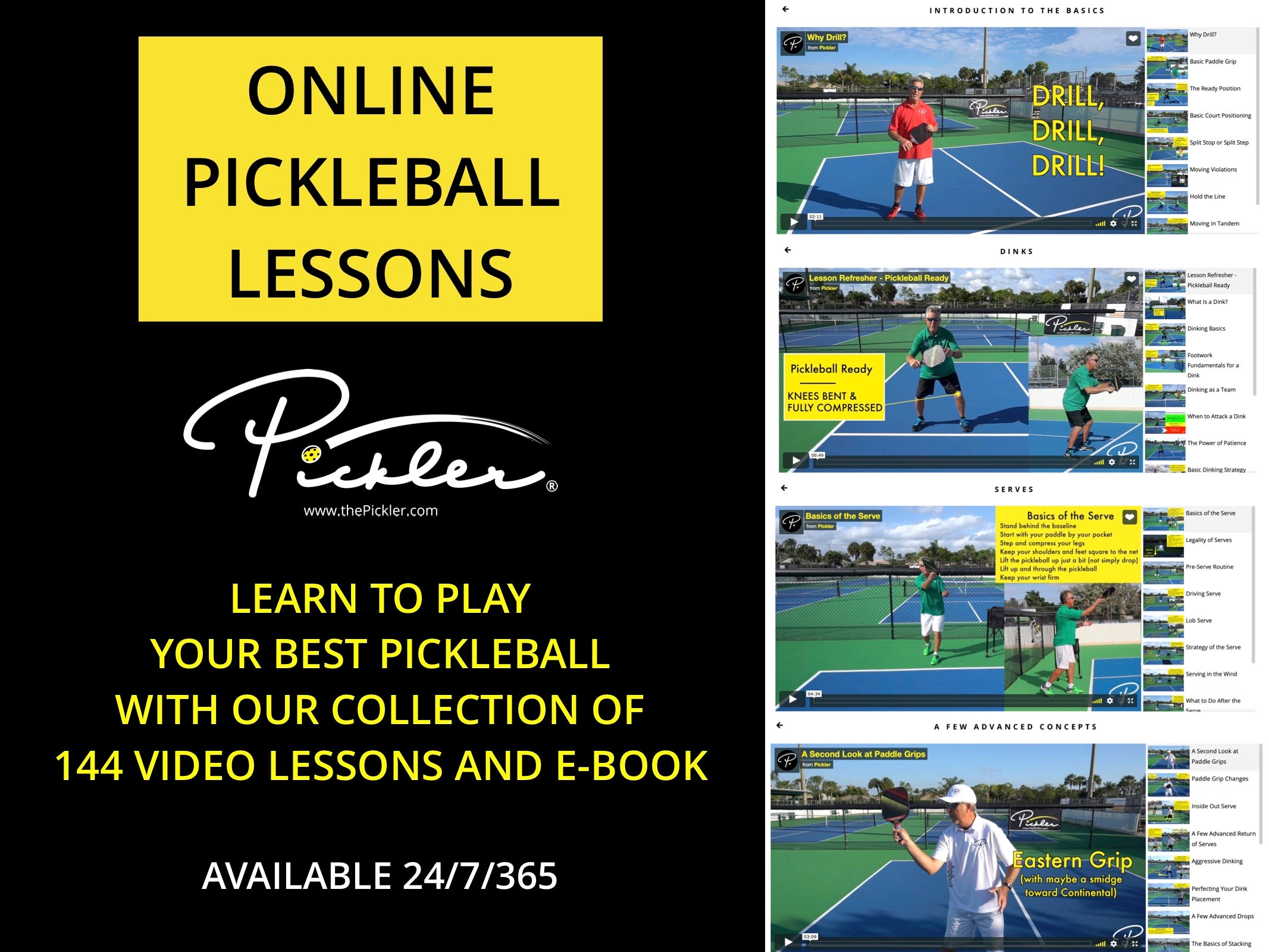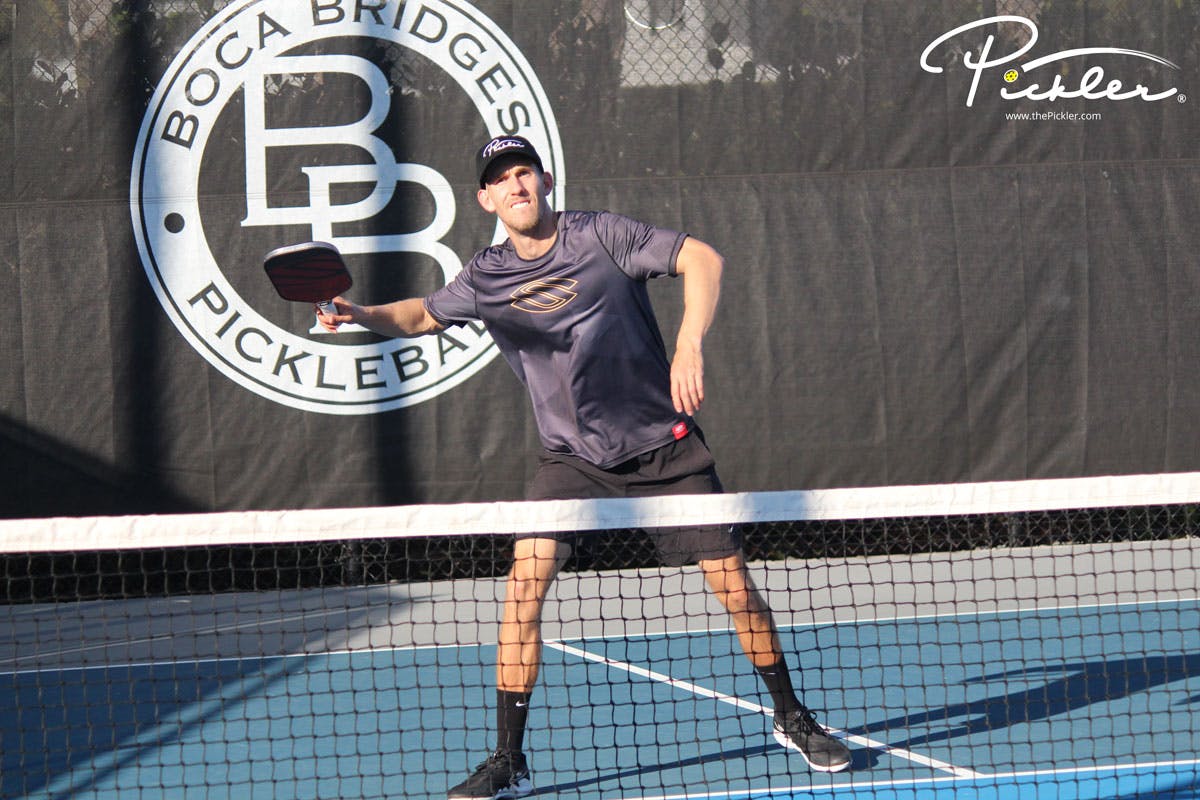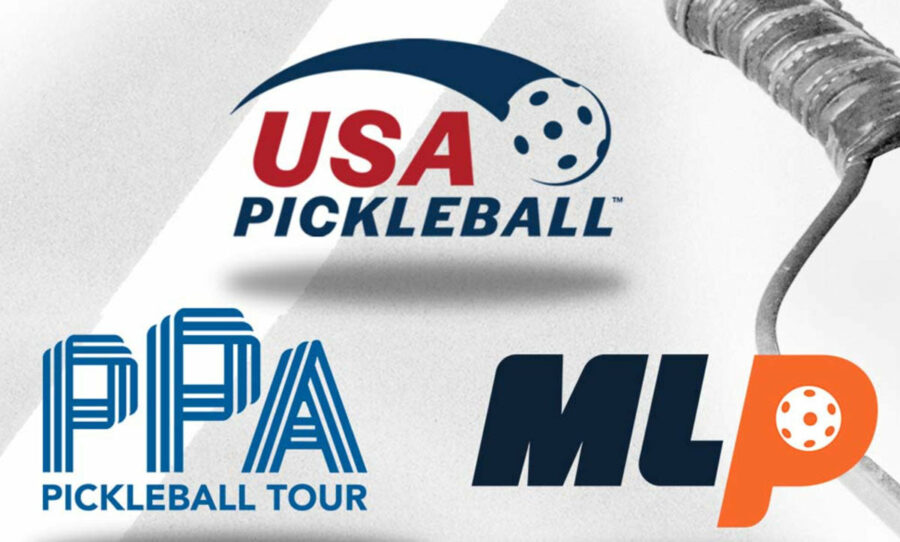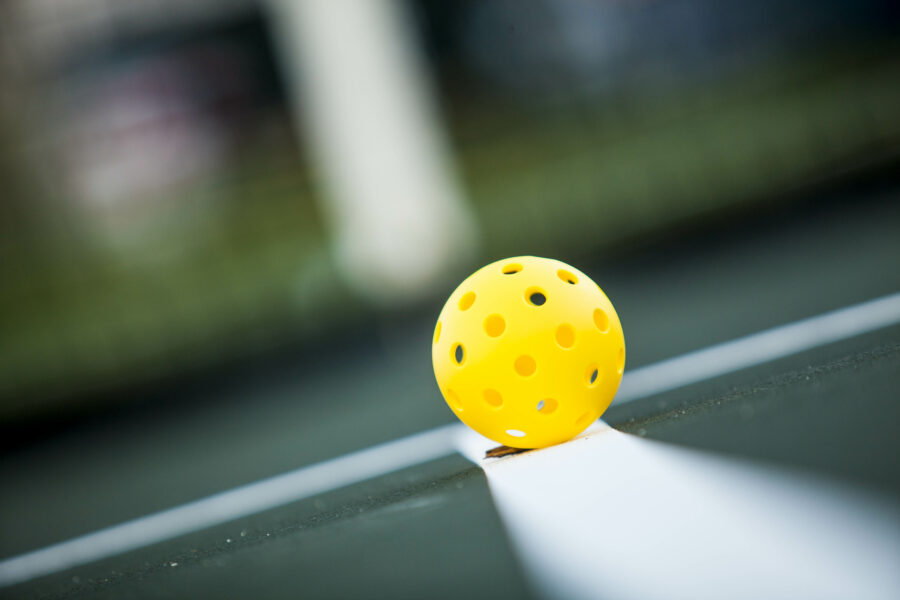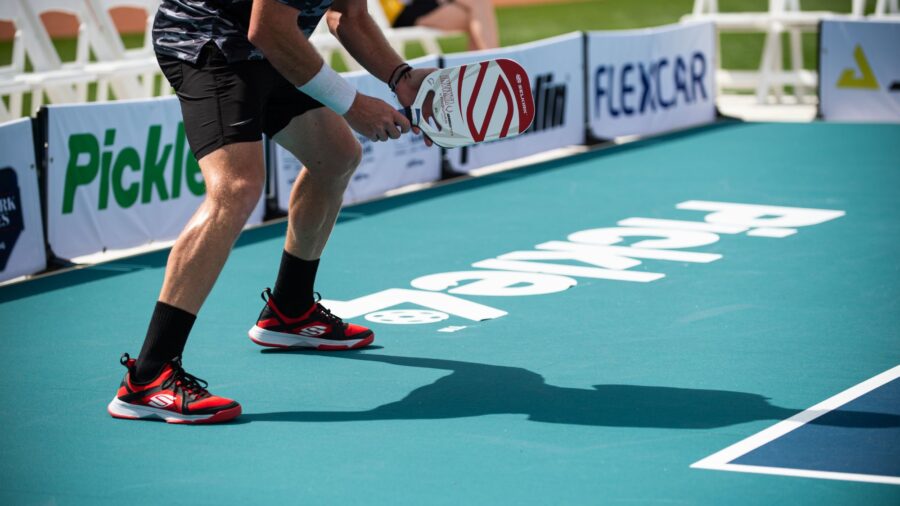From beginners to pros, we have noticed a common theme of mistakes on the pickleball courts, which is a backswing that is too big. A backswing is the part of your swing that is prior to you making contact with the pickleball. It is the movement of your paddle backwards (away from the pickleball) in order to prepare for the forward swing (toward the pickleball). And, it is this backswing—which is too often too big—that is causing players to make mistakes on the pickleball court.
Since many pickleball players come from other racquet sports, like tennis, they have a tendency to bring their mechanics from those sports with them. For instance, tennis players are used to longer racquets, heavier balls, and a longer distance to hit the ball. So, big backswings are necessary to help players hit the heavy ball with the heavy racquet a far distance. However, pickleball is unique. The paddle is shorter and more compact, the ball is lighter (it literally is a whiffle ball), and the distance is almost cut in half. As a result, pickleball requires different strokes and techniques.
Another reason pickleball players are taking big backswings on the court is in an effort to hit the pickleball harder—everyone loves to power through the pickleball. However, a backswing that is too big is a big mistake on the pickleball court.
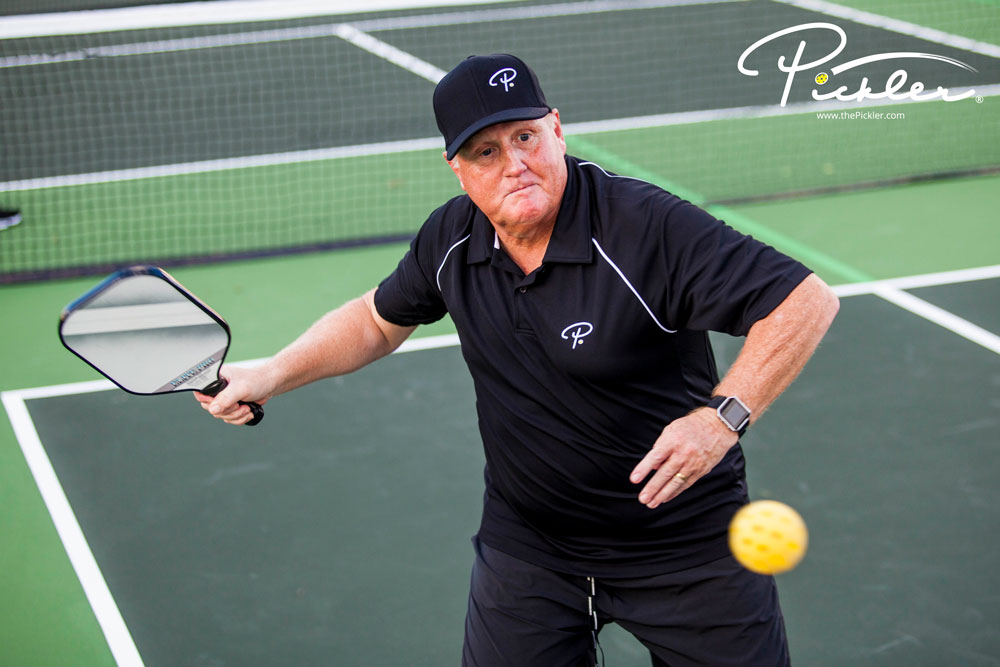
Big backswings cause mistakes for a number of reasons:
- Big backswings take more time, which means you will have slower reaction time and be less likely to catch up to your opponents. This is especially true at the Non-Volley Zone line.
- Big backswings mean you are doing more on the court, and doing more means more chances of making errors. For instance, taking a big backswing could result in you over-rotating your body and, by over-rotating, it will be harder for you to have a consistent, repeatable point of contact. Rather, you will be more inclined to hit the pickleball to the left or to the right, or too high or too low, of your target. In summary, big backswings lead to less consistency.
- Big backswings may also lead to too much power on the pickleball court. A pickleball court is only 20 feet by 44 feet, so placement (like hitting the pickleball down at your opponents’ feet) is more impactful than power on the pickleball. Big backswings may cause you to sail the pickleball out of bounds, and otherwise hurt your ability to place the pickleball.
- Big backswings – especially big backswings that differ for the different shots that you hit (e.g., big backswings that vary for dinks, drives, lobs, etc.) – will hurt your ability to disguise your shots on the pickleball court. Your opponents may be able to pick up on clues, which will give your opponents an advantage against you.
The goal should be to take short backswings. The more you limit your backswing, the faster reaction time you will have, the more consistent your shots will become, and the more you will be able to disguise your shots on the pickleball court.
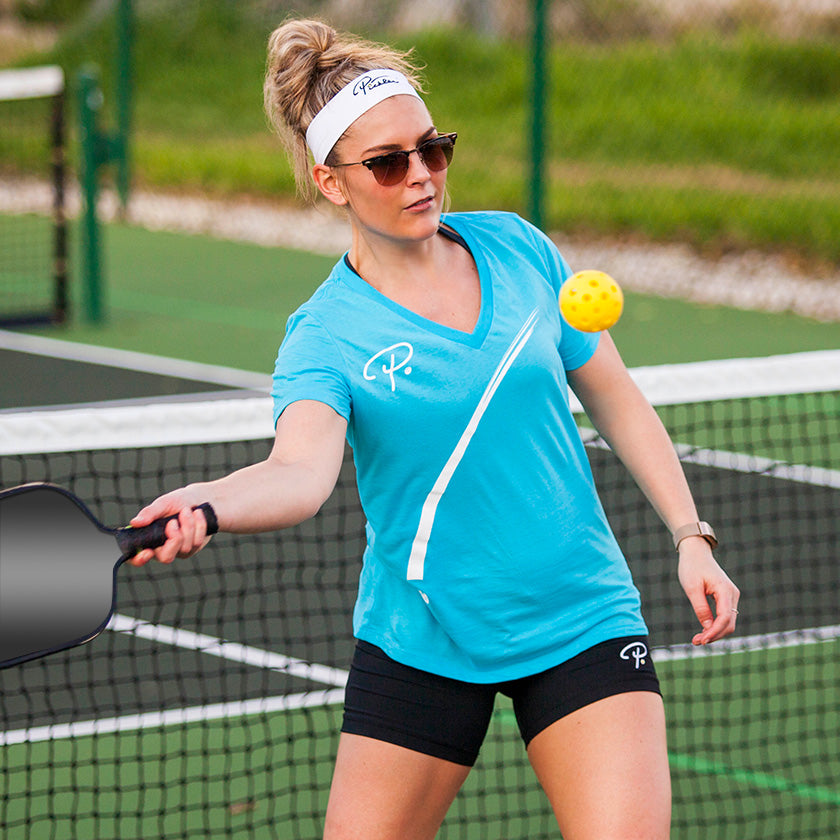
To help you do this, try to keep your paddle in your peripheral vision. If you can see your paddle as you bring it back for a shot, then you will be limiting your backswing. Also, as you move to the Kitchen line (as opposed to the baseline), limit your backswing even more (as you will have even less time to react). Try to keep your paddle within a “V” out in front of your body. As soon as you start to pull your paddle outside of the “V” or you start to lose sight of your paddle in your peripheral vision, then you know that you are starting to make the common mistake of taking too big of a backswing.
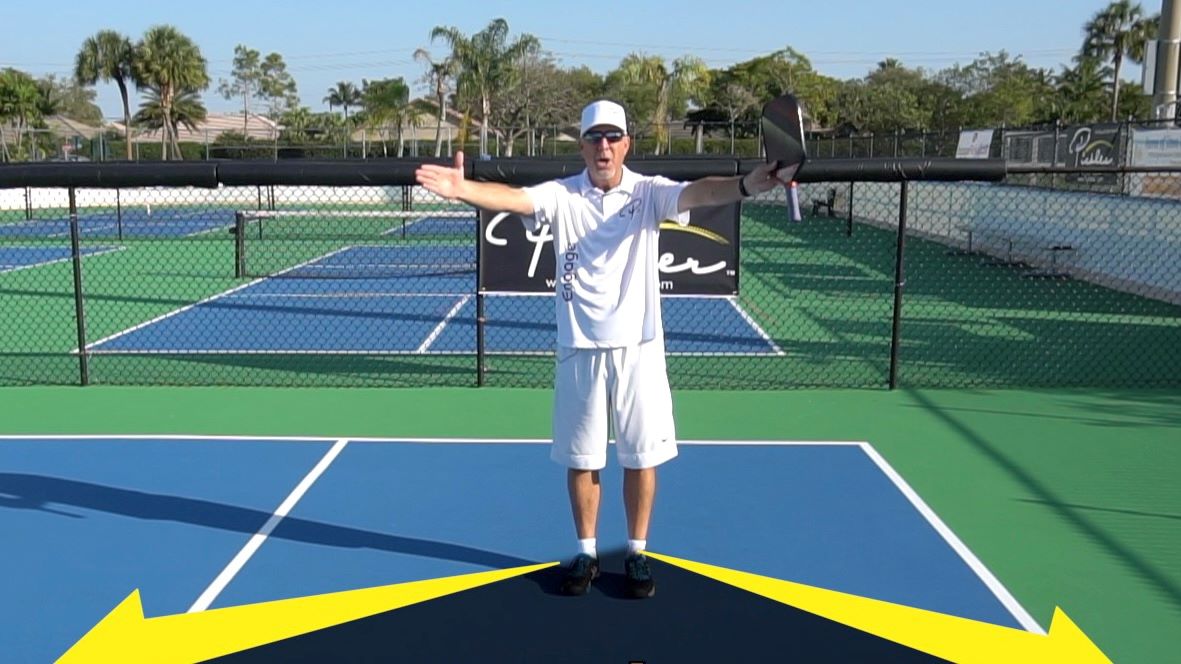
Even with a short, compact backswing, be sure to still follow through your shot. Do not stop at contact on your shots. Rather, hit the pickleball and then hit through two or three imaginary pickleballs in the direction that you want the pickleball to travel. Finish your swing and follow through your shot, which will help give you more power and more consistency on the pickleball court.
WANT MORE PICKLEBALL TIPS AND STRATEGIES?
Learn the #1 tip from the pro pickleball players!
Plus, if you want more pickleball tips and strategies on every aspect of your pickleball game, check out Pickler’s online video lesson collection called My Pro Pickleball Coach. My Pro Pickleball Coach is a fraction of the price of one clinic or even one lesson, and features over 140 video lessons (over 7 hours of instruction!), as well as a corresponding e-book. These online video lessons are available on demand 24/7 and breakdown every aspect of the sport of pickleball, including pickleball drills, strategy, and advanced concepts, so you will play your best pickleball.
